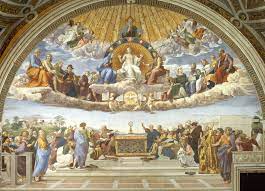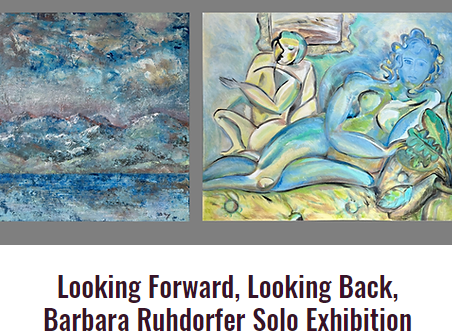From 23. Febuary to 20. March 2024 I am exhibting in Auckland’s ArtSelect Gallery (19A Osborne Street, Newmarket – at the back of the Rialto Cinema). Please come and view my art in person.

Discovery of Rafel’s masterpiece
Raphael was an Italian artist in the 15th century.
He was born as Raffaello Sanzio da Urbino on 28. March 1483 (and died 6. April 1520), and is known as Raphael. He was an Italian painter and architect of the High Renaissance . His work is admired for its clarity of form, ease of composition, and visual achievement of the Neoplatonic ideal of human grandeur.Together with Michelangelo and Leonardo da Vinci, he forms the traditional trinity of great masters of that period.
Raphael was enormously productive, running an unusually large workshop and, despite his early death at 37, leaving a large body of work. Many of his works are found in the Vatican Palace, where the frescoed Raphael Rooms were the central, and the largest, work of his career. The best known work is The School of Athens in the Vatican Stanza della Segnatura. After his early years in Rome, much of his work was executed by his workshop from his drawings, with considerable loss of quality. He was extremely influential in his lifetime, though outside Rome his work was mostly known from his collaborative printmaking.
After his death, the influence of his great rival Michelangelo was more widespread until the 18th and 19th centuries, when Raphael’s more serene and harmonious qualities were again regarded as the highest models. His career falls naturally into three phases and three styles, first described by Giorgio Vasari: his early years in Umbria, then a period of about four years (1504–1508) absorbing the artistic traditions of Florence, followed by his last hectic and triumphant twelve years in Rome, working for two Popes and their close associates.
He painted some amazing masterpieces
This is the brief story on how some of his best known masterpieces, the Madonna, almost disappeared in a Scottish Manor House.

The painting had been purchased in the early 1800s by George Hamilton-Gordon, the 4th Earl of Aberdeen and Prime Minister between 1852 and 1855 as a genuine Raphael. In 1841, the painting went to London and was part of Raphael exhibition at the British Institution. However, the painting was soon downgraded by experts of the time and attributed to Innocenzo Francucci da Imola, a minor Italian painter who often copied Raphael.
Grosvenor convinced the National Trust to conserve the painting and remove the layers of varnish. Research also revealed underdrawing in keeping with Raphael’s technique. The face and model additionally pointed to the painter, as does a now lost photograph of a Raphael drawing that matches the Madonna.
In 1899, a British renown art valuer reports, the painting was valued at £20, roughly $2550 in today’s currency. As a Raphael, it is now worth about $25.5 million on the art market.
In 2012 a similar discovery of a genuine Raphael was done in Poland. The masterpiece is called the “Young Man”.

The painting was purchased by Poland’s Prince Adam Jerzy Czartoryski in 1789, together with Leonardo da Vinci’s “Lady with an Ermine,” painted around 1489-90, and several other Roman antiquities. It was confiscated from the Czartoryski family’s collection in Krakow by the Nazis in 1939 for Hitler’s Fuhrermuseum, his personal museum in Linz. The painting was last seen in 1945, when Hans Frank, governor of the General Government, took the painting to Wawel Castle for his own personal use. It has been missing ever since.
The Czartoryski family has made consistent attempts to find the painting since the end of World War II but were hampered by the fact that Poland was behind the Iron Curtain. The family renewed its efforts in 1991.
There maybe others of Raphael’s masterpieces around and still to be re-discovered…
Sources: Wikipedia, ArtLaw (2012), Smithonian (2016)

